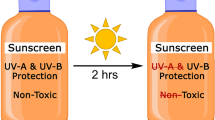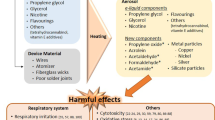Abstract
Lesion to the retinal pigment epithelium (RPE) is a crucial event in the development of age-related macular degeneration (AMD), the leading cause of blindness in industrialized countries. Tobacco smoking and high-energy visible blue (HEV; 400–500 nm) light exposure are major environmental risk factors for AMD. Individually, they have been shown to cause damage to the RPE. Tobacco smoke contains toxic polycyclic aromatic hydrocarbons (PAH) that can accumulate in RPE and which absorb HEV light. It can thus be postulated that the interaction between both factors in RPE cells can have a synergic toxic effect to the RPE. To test this hypothesis, cultured human RPE cells (ARPE19) were treated with nanomolar concentrations of benzo[a]pyrene (BaP) or indeno[1,2,3-cd]pyrene (IcdP), then exposed to HEV light using an irradiation system that mimics the solar spectrum normally transmitted to the retina through the human ocular media. Using mitochondrial network morphology changes and key features of AMD-related RPE defects such as apoptotic cell death and oxidative stress, we demonstrate that a synergistic phototoxicity is generated when nanomolar concentrations (≤ 500 nM) of IcdP interact with sub-lethal amounts of HEV light. Indeed, we found IcdP to be at least 3000 times more toxic for RPE cells when irradiated with HEV light. This synergy translates into disruption of mitochondrial network, ROS enhanced accumulation and apoptosis of RPE cells. Our results underline an important interplay between two environmental risk factors involved in AMD progression and strongly indicate that IcdP, upon interaction with HEV light, may initiate the biological mechanisms underlying the association between cigarette smoking and AMD-related RPE degeneration.






Similar content being viewed by others
References
Ali R, Trump S, Lehmann I, Hanke T (2015) Live cell imaging of the intracellular compartmentalization of the contaminate benzo[a]pyrene. J Biophoton 8:361–371. https://doi.org/10.1002/jbio.201300170
Ambati J, Fowler BJ (2012) Mechanisms of age-related macular degeneration. Neuron 75:26–39. https://doi.org/10.1016/j.neuron.2012.06.018
Andriessen EM, Wilson AM, Mawambo G, Dejda A, Miloudi K, Sennlaub F, Sapieha P (2016) Gut microbiota influences pathological angiogenesis in obesity-driven choroidal neovascularization. EMBO Mol Med 8:1366–1379. https://doi.org/10.15252/emmm.201606531
Bertram KM, Baglole CJ, Phipps RP, Libby RT (2009) Molecular regulation of cigarette smoke induced-oxidative stress in human retinal pigment epithelial cells: implications for age-related macular degeneration. Am J Physiol Cell Physiol 297:C1200–C1210. https://doi.org/10.1152/ajpcell.00126.2009
Boettner EA, Wolter JR (1962) Transmission of the ocular media Invest. Ophthalmol Vis Sci 1:776–783
Botta C, Di Giorgio C, Sabatier AS, De Meo M (2009) Effects of UVA and visible light on the photogenotoxicity of benzo[a]pyrene and pyrene. Environ Toxicol 24:492–505. https://doi.org/10.1002/tox.20455
Bourne RR et al (2013) Causes of vision loss worldwide, 1990–2010: a systematic analysis. Lancet Glob Health 1:e339–e349. https://doi.org/10.1016/S2214-109X(13)70113-X
Burke KE, Wei H (2009) Synergistic damage by UVA radiation and pollutants. Toxicol Ind Health 25:219–224. https://doi.org/10.1177/0748233709106067
Chakravarthy U et al (2010) Clinical risk factors for age-related macular degeneration: a systematic review and meta-analysis. BMC Ophthalmol 10:31. https://doi.org/10.1186/1471-2415-10-31
Chiras D, Kitsos G, Petersen MB, Skalidakis I, Kroupis C (2015) Oxidative stress in dry age-related macular degeneration and exfoliation syndrome. Crit Rev Clin Lab Sci 52:12–27 https://doi.org/10.3109/10408363.2014.968703
Dabestani R, Ivanov IN (1999) A compilation of physical, spectroscopic and photophysical properties of polycyclic aromatic hydrocarbons. Photochem Photobiol 70:10–34
Ding YS, Trommel JS, Yan XJ, Ashley D, Watson CH (2005) Determination of 14 polycyclic aromatic hydrocarbons in mainstream smoke from domestic cigarettes. Environ Sci Technol 39:471–478
Ding YS et al (2006) Determination of 14 polycyclic aromatic hydrocarbons in mainstream smoke from U.S. brand and non-US brand cigarettes. Environ Sci Technol 40:1133–1138
Dunaief JL, Dentchev T, Ying GS, Milam AH (2002) The role of apoptosis in age-related macular degeneration. Arch Ophthalmol 120:1435–1442
Ebrahimi KB, Cano M, Rhee J, Datta S, Wang L, Handa JT (2018) Oxidative stress induces an interactive decline in Wnt and Nrf2 signaling in degenerating retinal pigment epithelium. Antioxid Redox Signal. https://doi.org/10.1089/ars.2017.7084
Espinosa-Heidmann DG, Suner IJ, Catanuto P, Hernandez EP, Marin-Castano ME, Cousins SW (2006) Cigarette smoke-related oxidants and the development of sub-RPE deposits in an experimental animal model of dry. AMD Invest Ophthalmol Vis Sci 47:729–737. https://doi.org/10.1167/iovs.05-0719
Feher J, Kovacs I, Artico M, Cavallotti C, Papale A, Balacco Gabrieli C (2006) Mitochondrial alterations of retinal pigment epithelium in age-related macular degeneration. Neurobiol Aging 27:983–993. https://doi.org/10.1016/j.neurobiolaging.2005.05.012
Fritsche LG, Fariss RN, Stambolian D, Abecasis GR, Curcio CA, Swaroop A (2014) Age-related macular degeneration: genetics and biology coming together. Annu Rev Genom Hum Genet 15:151–171. https://doi.org/10.1146/annurev-genom-090413-025610
Fujihara M, Nagai N, Sussan TE, Biswal S, Handa JT (2008) Chronic cigarette smoke causes oxidative damage and apoptosis to retinal pigmented epithelial cells in mice. PLoS One 3:e3119. https://doi.org/10.1371/journal.pone.0003119
Hafezi F, Marti A, Munz K, Reme CE (1997) Light-induced apoptosis: differential timing in the retina and pigment epithelium. Exp Eye Res 64:963–970. https://doi.org/10.1006/exer.1997.0288
Handa JT (2012) How does the macula protect itself from oxidative stress? Mol Aspects Med 33:418–435. https://doi.org/10.1016/j.mam.2012.03.006
Hoffmann D, Hoffmann I, El-Bayoumy K (2001) The less harmful cigarette: A controversial Issue. A Tribute to Ernst L. Wynder. Chem Res Toxicol 14:767–790
Hollyfield JG et al (2008) Oxidative damage-induced inflammation initiates age-related macular degeneration. Nat Med 14:194–198. https://doi.org/10.1038/nm1709
Karbowski M, Youle RJ (2003) Dynamics of mitochondrial morphology in healthy cells and during apoptosis. Cell Death Differ 10:870–880. https://doi.org/10.1038/sj.cdd.4401260
Kaya S et al (2012) Comparison of macular pigment in patients with age-related macular degeneration and healthy control subjects—a study using spectral fundus reflectance. Acta Ophthalmol 90:e399–e403. https://doi.org/10.1111/j.1755-3768.2012.02423.x
King A, Gottlieb E, Brooks DG, Murphy MP, Dunaief JL (2004) Mitochondria-derived reactive oxygen species mediate blue light-induced death of retinal pigment epithelial cells. Photochem Photobiol 79:470–475
Kontush A, Finckh B, Karten B, Kohlschutter A, Beisiegel U (1996) Antioxidant and prooxidant activity of alpha-tocopherol in human plasma and low density lipoprotein. J Lipid Res 37:1436–1448
Lambert NG et al (2016) Risk factors and biomarkers of age-related macular degeneration Progress. Progress Retinal Eye Res 54:64–102. https://doi.org/10.1016/j.preteyeres.2016.04.003
Lerman S (1980) Radiant energy and the eye. Macmillan, New York
Lim LS, Mitchell P, Seddon JM, Holz FG, Wong TY (2012) Age-related macular degeneration. Lancet 379:1728–1738. https://doi.org/10.1016/S0140-6736(12)60282-7
Lodovici M, Akpan V, Evangelisti C, Dolara P (2004) Sidestream tobacco smoke as the main predictor of exposure to polycyclic aromatic hydrocarbons. J Appl Toxicol 24:277–281. https://doi.org/10.1002/jat.992
Marrot L (2017) Pollution and sun exposure: a deleterious synergy. Mechanisms and opportunities for skin protection. Curr Med Chem. https://doi.org/10.2174/0929867324666170918123907
Mauthe RJ, Cook VM, Coffing SL, Baird WM (1995) Exposure of mammalian cell cultures to benzo[a]pyrene and light results in oxidative DNA damage as measured by 8-hydroxydeoxyguanosine formation. Carcinogenesis 16:133–137
Patton WP, Routledge MN, Jones GD, Lewis SE, Archer DB, Davies RJ, Chakravarthy U (2002) Retinal pigment epithelial cell DNA is damaged by exposure to benzo[a]pyrene, a constituent of cigarette smoke. Exp Eye Res 74:513–522. https://doi.org/10.1006/exer.2001.1160
Pleil JD, Stiegel MA, Sobus JR, Tabucchi S, Ghio AJ, Madden MC (2010) Cumulative exposure assessment for trace-level polycyclic aromatic hydrocarbons (PAHs) using human blood and plasma analysis. J Chromatogr B Anal Technol Biomed Life Sci 878:1753–1760. https://doi.org/10.1016/j.jchromb.2010.04.035
Poot M et al (1996) Analysis of mitochondrial morphology and function with novel fixable fluorescent stains. J Histochem Cytochem 44:1363–1372
Putting BJ, Van Best JA, Vrensen GF, Oosterhuis JA (1994) Blue-light-induced dysfunction of the blood-retinal barrier at the pigment epithelium in albino versus pigmented rabbits. Exp Eye Res 58:31–40. https://doi.org/10.1006/exer.1994.1192
Rabin DM, Rabin RL, Blenkinsop TA, Temple S, Stern JH (2013) Chronic oxidative stress upregulates Drusen-related protein expression in adult human RPE stem cell-derived RPE cells: a novel culture model for dry. AMD Aging 5:51–66
Rivera-Figueroa AM, Ramazan KA, Finleyson-Pitts BJ (2004) Fluorescence, absorption and excitation spectra of polycyclic aromatic hydrocarbons as a tool for quantitative analysis. J Chem Educ 81:242–245
Roberto A, Larsson BS, Tjalve H (1996) Uptake of 7,12-dimethylbenz(a)anthracene and benzo(a)pyrene in melanin-containing tissues. Pharmacol Toxicol 79:92–99
Rowan S et al (2017) Involvement of a gut-retina axis in protection against dietary glycemia-induced age-related macular degeneration. Proc Natl Acad Sci USA 114:E4472–E4481. https://doi.org/10.1073/pnas.1702302114
Schirmer K, Chan AG, Greenberg BM, Dixon DG, Bols NC (1998) Ability of 16 priority PAHs to be photocytotoxic to a cell line from the rainbow trout gill. Toxicology 127:143–155
Schmidl D, Garhofer G, Schmetterer L (2015) Nutritional supplements in age-related macular degeneration. Acta Ophthalmol 93:105–121. https://doi.org/10.1111/aos.12650
Sharma A, Neekhra A, Gramajo AL, Patil J, Chwa M, Kuppermann BD, Kenney MC (2008) Effects of Benzo(e)Pyrene, a toxic component of cigarette smoke, on human retinal pigment epithelial cells in vitro. Invest Ophthalmol Vis Sci 49:5111–5117. https://doi.org/10.1167/iovs.08-2060
Soeur J et al (2017) Photo-pollution stress in skin: Traces of pollutants (PAH and particulate matter) impair redox homeostasis in keratinocytes exposed to UVA1. J Dermatol Sci 86:162–169. https://doi.org/10.1016/j.jdermsci.2017.01.007
Sparrow JR, Nakanishi K, Parish CA (2000) The lipofuscin fluorophore A2E mediates blue light-induced damage to retinal pigmented epithelial cells. Invest Ophthalmol Vis Sci 41:1981–1989
Sui GY et al (2013) Is sunlight exposure a risk factor for age-related macular degeneration? A systematic review and meta-analysis. Br J Ophthalmol 97:389–394. https://doi.org/10.1136/bjophthalmol-2012-302281
Thornton J, Edwards R, Mitchell P, Harrison RA, Buchan I, Kelly SP (2005) Smoking and age-related macular degeneration: a review of association. Eye (Lond) 19:935–944. https://doi.org/10.1038/sj.eye.6701978
Urano S, Kitahara M, Kato Y, Hasegawa Y, Matsuo M (1990) Membrane stabilizing effect of vitamin E: existence of a hydrogen bond between alpha-tocopherol and phospholipids in bilayer liposomes. J Nutr Sci Vitaminol (Tokyo) 36:513–519
Vu AT, Taylor KM, Holman MR, Ding YS, Hearn B, Watson CH (2015) Polycyclic Aromatic Hydrocarbons in the Mainstream Smoke of Popular US cigarettes. Chem Res Toxicol 28:1616–1626. https://doi.org/10.1021/acs.chemrestox.5b00190
Wang H, Joseph JA (1999) Quantifying cellular oxidative stress by dichlorofluorescein assay using microplate reader. Free Radic Biol Med 27:612–616
Wang S, Sheng Y, Feng M, Leszczynski J, Wang L, Tachikawa H, Yu H (2007) Light-induced cytotoxicity of 16 polycyclic aromatic hydrocarbons on the US EPA priority pollutant list in human skin HaCaT keratinocytes: relationship between phototoxicity and excited state properties. Environ Toxicol 22:318–327. https://doi.org/10.1002/tox.20241
Wang AL, Lukas TJ, Yuan M, Du N, Handa JT, Neufeld AH (2009) Changes in retinal pigment epithelium related to cigarette smoke: possible relevance to smoking as a risk factor for age-related macular degeneration. PLoS One 4:e5304. https://doi.org/10.1371/journal.pone.0005304
Wielgus AR, Collier RJ, Martin E, Lih FB, Tomer KB, Chignell CF, Roberts JE (2010) Blue light induced A2E oxidation in rat eyes–experimental animal model of dry AMD. Photochem Photobiol Sci 9:1505–1512. https://doi.org/10.1039/c0pp00133c
Wihlmark U, Wrigstad A, Roberg K, Nilsson SE, Brunk UT (1997) Lipofuscin accumulation in cultured retinal pigment epithelial cells causes enhanced sensitivity to blue light irradiatio. Free Radic Biol Med 22:1229–1234
Wong WL, Su X, Li X, Cheung CM, Klein R, Cheng CY, Wong TY (2014) Global prevalence of age-related macular degeneration and disease burden projection for 2020 and 2040: a systematic review and meta-analysis. Lancet Glob Health 2:e106–e116. https://doi.org/10.1016/S2214-109X(13)70145-1
Young RW (1987) Pathophysiology of age-related macular degeneration. Surv Ophthalmol 31:291–306
Zafarullah M, Li WQ, Sylvester J, Ahmad M (2003) Molecular mechanisms of N-acetylcysteine actions. Cell Mol Life Sci 60:6–20
Acknowledgements
The authors are grateful to the Institut National d’Optique (INO) (Québec, Canada) for technical support. This work was supported by a Grant from the Canadian Institutes of Health Research (CIHR, MOP-133719) to P.J.R. P.J.R. is a research scholar from the Fonds de Recherche du Québec – Santé (FRQ-S).
Author information
Authors and Affiliations
Contributions
CZ: experiment conception and design, data collection, analysis and interpretation of data, manuscript writing, and critical revision. PJR: experiment conception and design, critical revision.
Corresponding author
Ethics declarations
Conflict of interest
The authors declare that they have no conflict of interest.
Electronic supplementary material
Below is the link to the electronic supplementary material.
Rights and permissions
About this article
Cite this article
Zinflou, C., Rochette, P.J. Absorption of blue light by cigarette smoke components is highly toxic for retinal pigmented epithelial cells. Arch Toxicol 93, 453–465 (2019). https://doi.org/10.1007/s00204-018-2344-3
Received:
Accepted:
Published:
Issue Date:
DOI: https://doi.org/10.1007/s00204-018-2344-3




